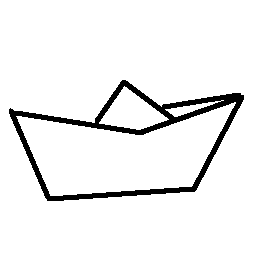The Brutish Museums by Dan Hicks
This book about the Benin Bronzes, colonial violence and cultural restitution bulldozes us out of the sleepy status quo of western museology.
The focus is on the sacking of the Kingdom of Benin in Africa as part of British colonial expansion at the end of 19th century. This was the height of imperialism, industrialisation and capitalism – which had all relied on slavery.
It looks at how the British took loot like regalia, religious artefacts, jewellery, etc. from Benin for personal and private profit of the soldiers, administrators, government officials and then how all this stolen stuff got scattered across time and space ending up in the collections of Euro-American museums.
The argument is made for the restitution of these stolen Benin artefacts to Nigeria, but a lot of western museums don’t want to give them back.
If you read the book it’s infuriating to see how these stolen Benin objects ended up in legitimate collections. To make sense of it, Dan Hicks, the author has to re-write history and use new terms to go about explaining it.
I appreciate his method, being bilingual, I know that sometimes there isn’t a way to communicate a concept unless a new word or term is found to do its meaning justice.
Here are the big-hitter points Hicks makes in the book:
0. The cultural destruction that the British Empire inflicted on Africa in the “small wars” campaigns including the sacking of Benin City in 1897 is reframed as World War Zero. It was a democide with the ongoing social impact felt today in the form of anti-Black racism.
“[The Benin Bronzes are] relics through which the violence, as both an idea and a reality, would be continually surfaced and made to last.”
1. What took place in Benin and wider West Africa was different from the settler colonialism occurring in places like Canada and Australia, where colonists lived on the land removing indigenous rights. It was extractive and militarist colonialism, whereby taking resources and labour was part of the technology of rule.
2. White projection is the lens through which events were viewed at the time, ‘a continual switching of positions between the powerful and the weak to create the image of white victims through mediatised violence.’
For example, the sacking of Benin was called a “punitive expedition” by the British even though the attack was being strategized before the punishable offence occurred. The real reason behind the razing of Benin was the raw resources, like palm oil and rubber that the Oba was blocking from the British. The intent was to forcefully open up the Niger Delta to increase profits for the empire. Yet, the story was spun in the press and in parliament as “civilised” westerners punishing “savage” people to bring about peace.
“To question the framing of an event is to question what is out of proportion: what is trivialised and what is magnified… The hushed silences of museum galleries displaying stolen culture and the unspoken ideology of white supremacy is the example that this book is using to try to think that through.”
3. Museums were weaponised, complicit in the colonial violence of empire, and so long as the looted objects from Benin remain on display (or hidden in storerooms) in the countries that took them, this violence endures. Violent military operations involved the theft of art, which was then classified as “primitive” in western museum displays.
‘The effect was to show an ancient living culture, freshly destroyed, as if it were nothing but archaeological remains.’ This is why we have brutish museums that would rather long-term loan stolen artefacts back to the countries where they came from. It’s because they still believe in their own superiority.
“The old argument that restitution is a distraction from the ‘real work’ of anti-racism is past its sell-by date. Art matters. Culture matters. The destruction of sovereignty, the attack on traditional belief, attempts at wholesale cultural dispossession – all these military tactics engaged by Europeans in Africa recognised the importance of art and culture.”

